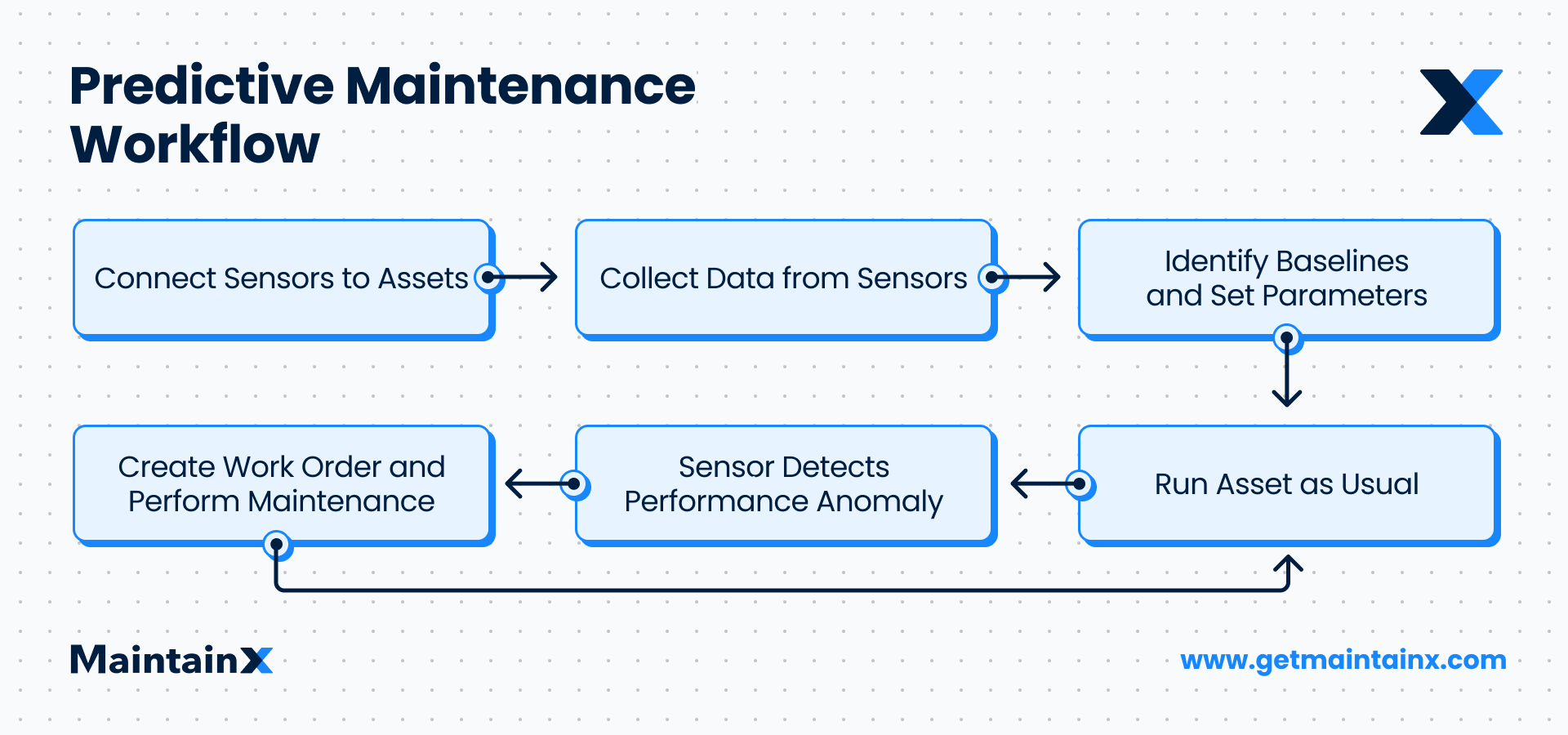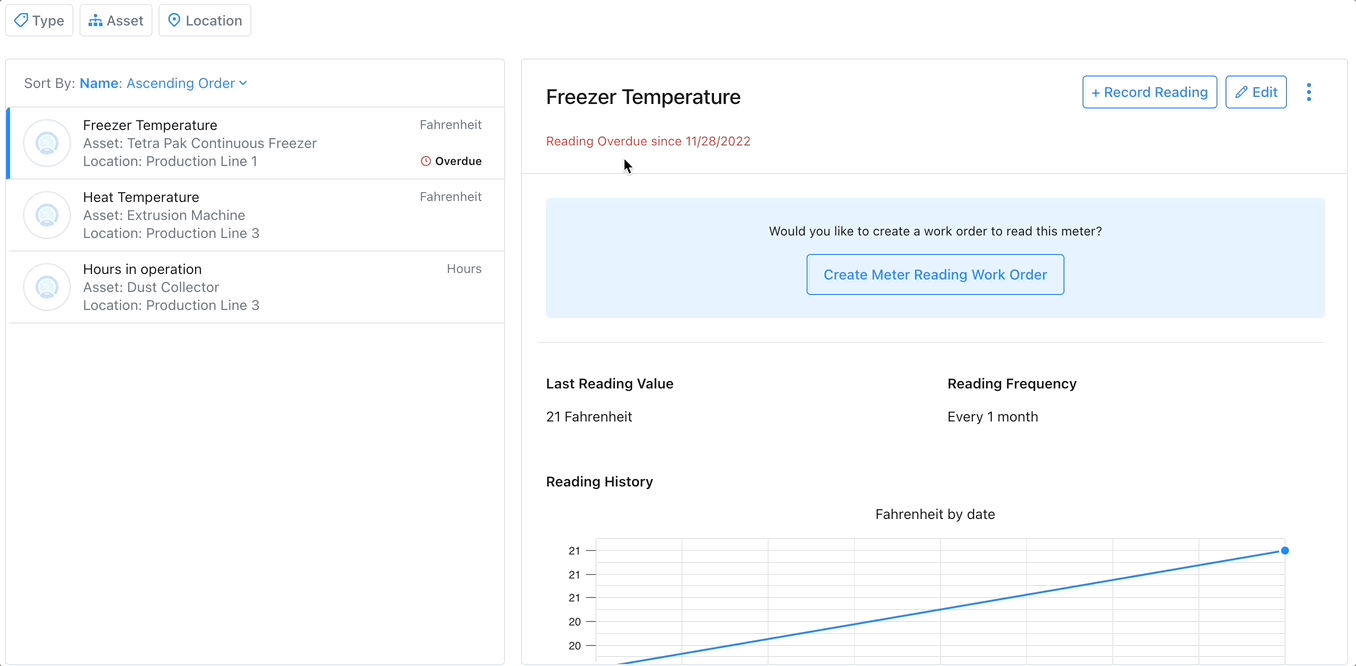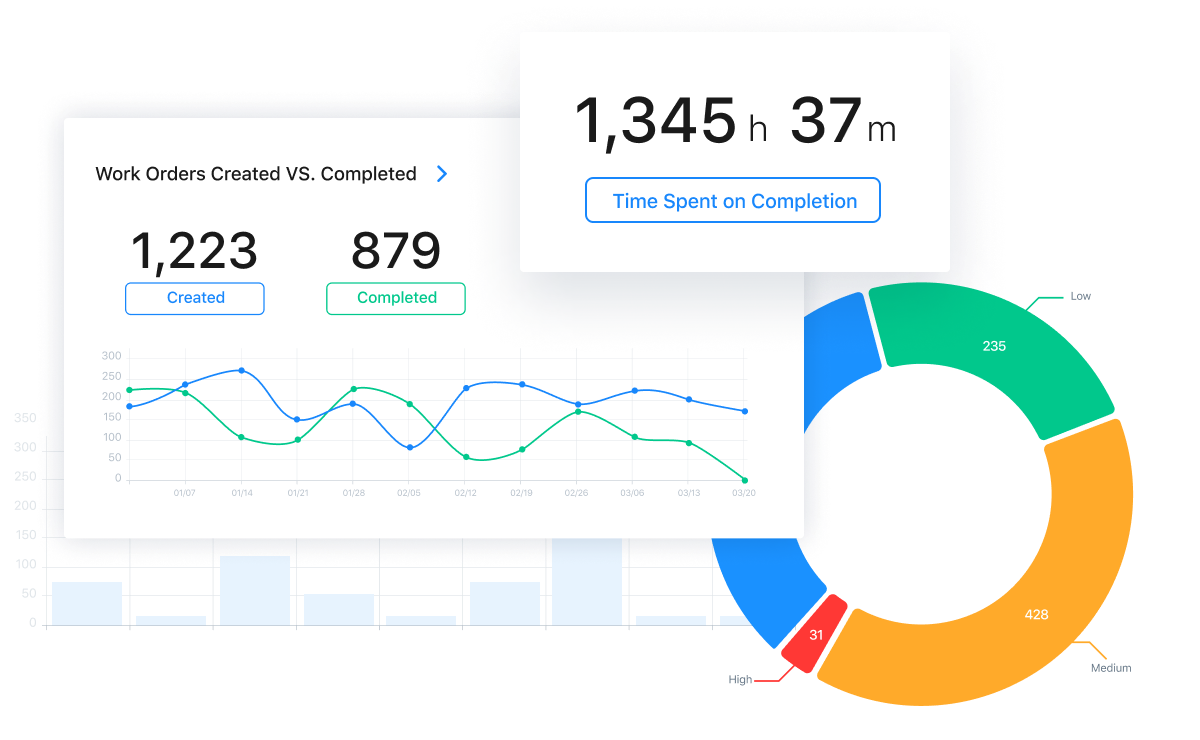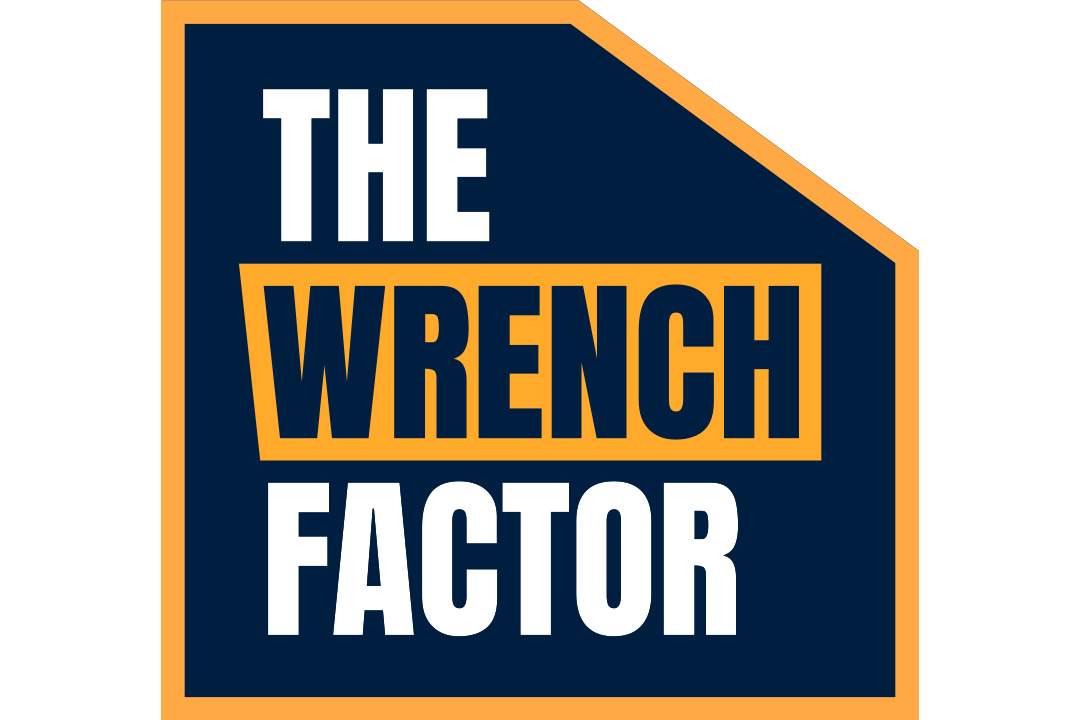
Predictive maintenance (PdM) is a preventive maintenance strategy that can identify potential equipment failures or breakdowns before they happen.
By regularly carrying out PdM and preventive maintenance activities, teams can prevent breakdowns and unplanned downtime. This strategy can save money that would otherwise go to costly reactive maintenance or corrective maintenance. A robust preventive maintenance strategy also helps ensure valuable assets are always available for critical production work.
To this end, PdM uses meter and sensor technology with data analytics to predict when assets are at risk of failing. To properly execute this, teams need the right technology. Work order software and computerized maintenance management systems (CMMS) help gather, store, and analyze maintenance and equipment data. In addition, work order management tools are crucial for scheduling and executing maintenance work.

How Does Predictive Maintenance Work?
As stated, predictive maintenance combines IIoT technology and data analytics to identify patterns in equipment behavior to predict future performance. Steps include:
- Maintenance technicians fit equipment and assets with monitoring equipment. Such sensor devices include vibration analysis equipment, infrared thermography cameras, and ultrasonic technology. Teams use these tools to monitor and measure properties like temperature, electrical current, pressure, vibration, and oil levels.
- A central monitoring system collates and stores the data. Maintenance work order software like CMMS tools are examples of solutions that can help with data collection and storage. Teams then analyze the data using data analytics tools to compare an asset’s present behavior and its regular or expected behavior, flagging any anomalies that may indicate an imminent failure.
- Maintenance personnel will receive notifications or alerts once the system detects any anomalies that suggest potential failure. Depending on the system in place in the specific facility, maintenance teams can schedule and perform the necessary maintenance tasks.Work order management systems are also helpful here for streamlining the scheduling process.
“When companies think about the future of asset productivity, it is advanced approaches, such as predictive maintenance, that tend to attract the most attention.”
McKinsey
How Does Predictive Maintenance Improve KPIs?
Key Performance Indicators (KPIs) are measurable goals and benchmarks that enable maintenance departments to gauge their performance. Maintenance KPIs help managers make real-time informed decisions and evaluate how well teams perform concerning their maintenance plan and production activities.

Teams can use work order management software to track and analyze their KPIs and strategic goals. CMMS software with robust reporting functionality can help teams gain insight into their KPIs and optimize maintenance operations.
For example, Mean Time Between Failure (MTBF) measures the average time between one failure and another for a specific piece of equipment. A facility that sees a low MTBF for a particular asset immediately knows that the asset might have deeper problems requiring a root cause analysis instead of repeated simple fixes.
“Predictive maintenance offers [maintenance professionals] the potential to optimize maintenance tasks in real time, maximizing the useful life of their equipment while still avoiding disruption to operations.”
Deloitte
Benefits of Predictive Maintenance on KPIs
Reduces Downtime
Downtime is one of the most critical maintenance metrics. Unplanned downtime is incredibly costly for manufacturing facilities as it affects profits and your bottom line in multiple ways.
For one, equipment being out of commission due to downtime means crucial production time is lost. In addition, unplanned downtime is often the result of equipment failure, which usually requires expensive fixes and the diversion of staff who would otherwise be engaged in other, more productive tasks, thus increasing maintenance costs.
Predictive maintenance helps reduce equipment downtime and increase uptime by providing maintenance technicians with the necessary information to create maintenance schedules.

Improves Planned Maintenance Percentage
Outside of downtime, it’s also a good idea for businesses to monitor operational metrics. Operational metrics include Schedule Compliance and Planned Maintenance Percentage (PMP).
PMP measures how much of a team’s total maintenance focuses on planned maintenance (as opposed to unplanned maintenance). The higher the percentage indicates that maintenance teams can focus more on planned and preventive activities and fewer breakdowns than on reactive maintenance.
A robust predictive maintenance program helps improve PMP by helping teams predict when they need to carry out maintenance, reducing the likelihood of breakdowns and subsequent reactive maintenance. Work order software is crucial for tracking past maintenance activities, assessing their success with analytics features, and scheduling future maintenance.
Improves Asset Performance Metrics
Asset performance metrics give teams insight into how well their maintenance activities are working. Asset performance metrics include MTBF, Mean Time to Repair (MTTR), and Overall Equipment Effectiveness (OEE). These metrics depend on equipment availability or run time, which teams can optimize using predictive maintenance technologies.

Optimize Your KPIs with MaintainX
MaintainX is a computerized maintenance management software that seeks to streamline your workflows and optimize your maintenance processes with a range of functional solutions, from inventory management to real-time communication between stakeholders.
Take our Reporting module, for example, which aims to enable data-driven decision-making about your asset management and overall maintenance. With MaintainX’s reporting feature, you can create custom dashboards to track the asset performance metrics that matter to you. Gain instant visibility into your performance and the success of your maintenance strategy.

Calling ourselves the best work order software might seem biased on our part, so don’t just take our word for it. MaintainX was ranked highest in the ease-of-use category on Capterra and was rated #1 for “most implementable” and “easiest setup” in G2’s report. Ready to implement predictive maintenance to help meet your long-term business goals? Try MaintainX for free!
FAQs

Lekan Olanrewaju is a content writer with years of experience in media and content creation. He has held positions at various media organizations, working with and leading teams at print magazines, digital publications, and television productions.








.jpeg)
.jpg)
.jpeg)

.jpeg)



.jpg)



